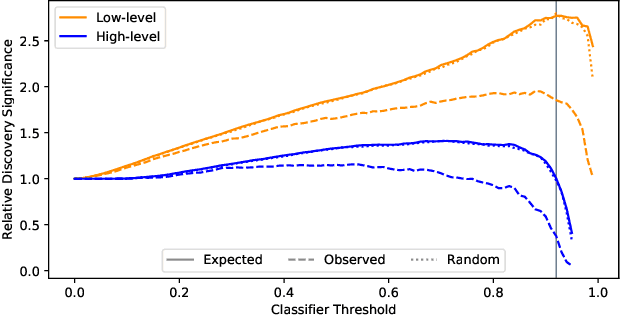AI Safety for High Energy Physics
Paper and Code
Oct 18, 2019



The field of high-energy physics (HEP), along with many scientific disciplines, is currently experiencing a dramatic influx of new methodologies powered by modern machine learning techniques. Over the last few years, a growing body of HEP literature has focused on identifying promising applications of deep learning in particular, and more recently these techniques are starting to be realized in an increasing number of experimental measurements. The overall conclusion from this impressive and extensive set of studies is that rarer and more complex physics signatures can be identified with the new set of powerful tools from deep learning. However, there is an unstudied systematic risk associated with combining the traditional HEP workflow and deep learning with high-dimensional data. In particular, calibrating and validating the response of deep neural networks is in general not experimentally feasible, and therefore current methods may be biased in ways that are not covered by current uncertainty estimates. By borrowing ideas from AI safety, we illustrate these potential issues and propose a method to bound the size of unaccounted for uncertainty. In addition to providing a pragmatic diagnostic, this work will hopefully begin a dialogue within the community about the robust application of deep learning to experimental analyses.
 Add to Chrome
Add to Chrome Add to Firefox
Add to Firefox Add to Edge
Add to Edge